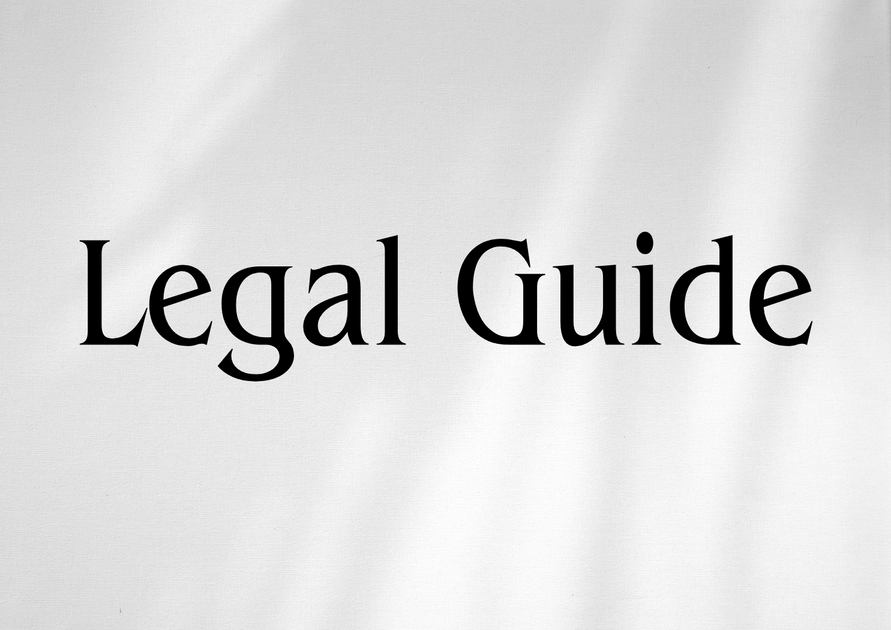Introduction
In the rapidly evolving commercial landscape of the United Arab Emirates (UAE), effective dispute resolution mechanisms have become central to successful business operations. As the UAE solidifies its reputation as a global business hub, the law has responded in kind: arbitration is now firmly embedded as the preferred method of resolving complex commercial disputes. The inclusion—and careful drafting—of arbitration clauses in UAE contracts is therefore not merely a procedural step, but a strategic necessity for safeguarding business interests and ensuring legal enforceability.
This article offers a consultancy-grade, detailed analysis of drafting robust arbitration clauses within UAE contracts, especially against the backdrop of recent legal reforms, most notably Federal Law No. 6 of 2018 on Arbitration (the UAE Arbitration Law) and its practical application as reinforced in Cabinet Decision No. 57 of 2018 on the Regulations of Federal Law No. 11 of 1992 (the Civil Procedure Code), as amended. With Federal Decree-Law No. 15 of 2023 introducing further procedural efficiencies, and the continued adoption of international best practices by UAE arbitral institutions, it is more important than ever for businesses, executives, HR managers, and legal practitioners to remain current and proactive in drafting and negotiating arbitration agreements.
This guide provides both a strategic overview and granular, actionable insights, positioning readers to minimise risks and leverage the full potential of arbitration under UAE law in 2025 and beyond.
Table of Contents
- UAE Arbitration Framework in 2025: Legal Landscape and Key Regulations
- The Legal Significance of Arbitration Clauses in UAE Contracts
- Core Elements of an Effective Arbitration Clause
- Drafting Best Practices: Consultancy Insights
- Comparison: Pre-2018 and Current UAE Arbitration Framework
- Case Studies and Hypothetical Scenarios
- Risks of Poorly Drafted Clauses and Non-Compliance
- Compliance Strategies and Practical Recommendations
- The Future of Arbitration in the UAE: Trends and Anticipated Developments
- Conclusion and Key Takeaways
UAE Arbitration Framework in 2025: Legal Landscape and Key Regulations
Key Statutes and Institutional Developments
The UAE’s current arbitration legal framework is primarily governed by:
- Federal Law No. 6 of 2018 on Arbitration (the “Arbitration Law”), effective from June 2018, which superseded the earlier framework under the Civil Procedure Code.
- Cabinet Decision No. 57 of 2018, introducing supporting regulations relevant to enforcement of arbitral awards and court procedures.
- Federal Decree-Law No. 15 of 2023, amending procedural timelines for recognition and enforcement, streamlining court intervention and supporting digital transformation in arbitration.
The UAE’s alignment with the UNCITRAL Model Law has encouraged a modern approach to arbitration, supported further by major institutional developments such as:
- Dubai International Arbitration Centre (DIAC) Rules 2022
- Abu Dhabi International Arbitration Centre (arbitrateAD)
- Local branches of international arbitral bodies (e.g., ICC UAE)
Official Sources
- Ministry of Justice: Official Website
- UAE Federal Legal Gazette
The Legal Significance of Arbitration Clauses in UAE Contracts
Arbitration clauses, if drafted correctly, offer certainty, enforceability, confidentiality and procedural autonomy. Under UAE law:
- Article 7(1), Federal Law No. 6 of 2018 stipulates arbitration agreements must be in writing, either as a clause or a separate agreement.
- An enforceable clause precludes court jurisdiction in favor of arbitration.
- Parties can designate arbitral institutions, seat, governing law, language, and other procedural elements.
Why Arbitration Clauses Are Mission-Critical
- A clause crafted with precision avoids costly disputes about jurisdiction or arbitral procedure.
- They underpin cross-border enforceability via the New York Convention (1958), to which the UAE is a signatory.
In light of expanding international investments and joint ventures, a robust arbitration clause is a foundation for legal certainty in the UAE context, especially as the local courts become more sophisticated and internationalized in enforcing arbitral awards.
Core Elements of an Effective Arbitration Clause
Essential Provisions
- Scope: Covers “all disputes arising out of or in connection with the contract” to maximize coverage.
- Governing Law: Specify the substantive law to avoid uncertainty (e.g., “The law of the United Arab Emirates”).
- Seat and Venue: The seat of arbitration (determines procedural law) and the physical venue (may affect logistical ease).
- Arbitral Institution and Rules: Designate a recognized institution (e.g., DIAC, ICC) and refer to its latest rules.
- Appointment of Arbitrators: Specify appointment mechanism, number of arbitrators, and qualifications (if required).
- Language of Proceedings: Particularly important for cross-border transactions.
- Confidentiality: Clause addressing the confidentiality of proceedings, which is presumed under Art. 33 of the Arbitration Law but should be made explicit.
- Interim Measures: Clarify powers to grant interim relief (see Arts. 21-22, Arbitration Law).
Sample Model Clause (For Guidance)
While model clauses provided by leading arbitral institutions are a helpful starting point, customization to the UAE context is essential. For instance:
“Any dispute, controversy or claim arising out of or relating to this Contract, including the validity, invalidity, breach or termination thereof, shall be referred to and finally resolved by arbitration under the Rules of [Chosen Institution] by [one/three] arbitrators. The seat of arbitration shall be [Emirate, UAE]; the language to be used in the arbitral proceedings shall be [English/Arabic]. The governing law shall be the law of the United Arab Emirates.”
Consultancy Insight: Adapt standard clauses to the transaction’s risk profile, business context, and regulatory environment.
Drafting Best Practices: Consultancy Insights
Addressing Common Pitfalls
- Avoiding Ambiguity: Vague references such as “disputes will be settled by arbitration” are inadequate. Specify the institution, rules, seat, scope, and governing law.
- Multi-tiered Dispute Resolution: Carefully structure escalation clauses (negotiation, mediation, then arbitration) to avoid jurisdictional uncertainty. Clearly define mandatory versus optional steps.
- Pathological Clauses: Address inconsistencies or incompleteness that could invalidate the clause.
- Enforceability: Ensure the clause is compatible with UAE and New York Convention requirements.
Visual Suggestion: Arbitration Clause Checklist Table
| Key Element | Consultancy Guidance |
|---|---|
| Institution | Name a recognized arbitral institution (DIAC, ICC, ADGM or ADCCAC) |
| Rules | Reference latest published rules explicitly (e.g., DIAC Rules 2022) |
| Seat / Venue | Define jurisdiction to prevent disputes over procedural law |
| Governing Law | State unequivocally to avert choice of law battles |
| Number of Arbitrators | Usually one for smaller contracts, three for major commercial contracts |
| Language | Match business requirements and expectations of the parties |
| Scope | Broad formulation: “arising out of or in connection with” |
| Confidentiality | Explicitly state; reinforces statutory presumption under UAE law |
Brand-Sensitive Customization
Businesses operating under UAE law must tailor dispute resolution provisions to sector-specific risks and cross-border dynamics. Specialized consultancy support is recommended when complex issues—such as non-UAE entities, Shari’a law considerations, or regulatory approvals—arise.
Comparison: Pre-2018 and Current UAE Arbitration Framework
The transformative impact of Federal Law No. 6 of 2018 and subsequent regulations is best understood through direct comparison:
| Aspect | Pre-2018 (Civil Procedure Code) | Post-2018 (Arbitration Law & 2023 Amendments) |
|---|---|---|
| Legal Basis | Limited provisions, criticized for ambiguity | Comprehensive Arbitration Law, Model Law-based framework |
| Form of Agreement | Required strict adherence; oral reference not sufficient | Written/electronic agreements explicitly permitted |
| Interim Measures | Unclear, little court support | Express court powers (Arts. 21–22); emergency arbitrator procedures |
| Appointment of Arbitrators | No default mechanism for deadlock | Court assistance and institutional rules |
| Enforcement | SLOW: lengthier, more formalistic | Expedited (under Decree-Law 15/2023); courts bound by tight deadlines |
| Annulment Risks | Various formalistic pitfalls | Modern grounds, balanced court review |
Visual Suggestion: Penalty and Annulment Comparison Chart
Such a chart can help businesses readily see the consequences of procedural missteps pre-2018 versus today, highlighting how compliance is easier and less risky under the new law.
Case Studies and Hypothetical Scenarios
Case Study 1: Cross-Border Technology JV
Scenario: A UAE tech company and a Singaporean partner entered a joint venture with a poorly-worded clause: “Disputes settled by DIAC arbitration.” The JV later disintegrated over intellectual property rights.
- Issue: Inadequately defined scope and rules led to court challenge over arbitrable subject matter.
- Lesson: The Dubai Courts initially took jurisdiction, prolonging proceedings. After legal counsel intervened and clarified intent, parties agreed to amend the clause, resulting in a binding DIAC award.
Case Study 2: Construction Sector Safeguards
Scenario: An international contractor included a comprehensive arbitration clause referencing DIAC, the English language, and UAE law, with three arbitrators. A payment dispute arose.
- Issue: Opponent attempted to annul the award, alleging incorrect notice procedure.
- Outcome: The Dubai Courts, guided by Art. 54 of the Arbitration Law, upheld the award, recognizing that DIAC’s electronic notice system satisfied statutory requirements.
Hypothetical: Ambiguous Seat and Venue
Scenario: A clause states, “Arbitration to be held in Abu Dhabi,” with no reference to seat or rules.
- Risk: Parties later disagreed on whether ADCCAC rules applied, and whether Abu Dhabi or English law governed procedural issues.
- Consultancy Advice: Specify “the seat of arbitration shall be Abu Dhabi, United Arab Emirates, and the rules of [Institution] shall apply.”
Risks of Poorly Drafted Clauses and Non-Compliance
- Loss of Arbitration Rights: Ambiguous or inconsistent clauses can result in courts taking jurisdiction, contrary to commercial intent.
- Delayed Enforcement: Flawed clauses can prolong award recognition and enforcement in UAE courts (see Arts. 53–54, Arbitration Law).
- Financial Penalties and Losses: Poor drafting may result in costly litigation, reputational risk, or unenforceable awards.
- Procedural Annulment: Common pitfalls include failure to specify rules, seat, or appointment method, leading to annulment under Art. 53.
Visualization Suggestion: Summary Table of Risks and Mitigation
| Pitfall | Legal Risk | Mitigation |
|---|---|---|
| Ambiguity in rules/seat | Jurisdictional disputes | Expressly state rules and seat |
| No designation of language | Miscommunication, cost escalations | Include language clause |
| Poor appointment mechanism | Deadlock; court intervention needed | Adopt institutional default or clear process |
| Missing confidentiality | Disclosure risk | Reaffirm in clause |
Compliance Strategies and Practical Recommendations
Legal Compliance Roadmap for UAE Contracts
- Regular Legal Review: Update templates and review all pending agreements in line with latest Arbitration Law, Cabinet Decisions, and major institution rule updates.
- Process Automation: Implement digital contract management systems that flag missing or non-compliant arbitration provisions.
- Staff Training: Conduct annual workshops for legal, HR, and procurement teams to familiarize them with the evolving statutory framework (referencing the Ministry of Justice and Federal Legal Gazette updates).
- Pre-signing Legal Opinions: For high-value or cross-border contracts, seek specialist opinions to ensure enforceability in both UAE and overseas jurisdictions.
- Dispute Resolution Workflow Mapping: Create internal process diagrams showing the claims management path: negotiation → mediation (if applicable) → arbitration, with triggers for legal escalation.
Suggested Visual: Arbitration Workflow Diagram
A simple process flow diagram showing: Contract → Dispute Arises → Internal Negotiation → Mediation (optional) → Arbitration (specifying rules, seat, language) → Final Award → Enforcement in UAE Courts.
The Future of Arbitration in the UAE: Trends and Anticipated Developments
Legislative and Market Signals
- Expect further digitalization and online dispute resolution platforms endorsed by the Ministry of Justice and local arbitral bodies.
- Amendments aligning with international arbitration standards (e.g., third-party funding, expedited arbitrations).
- Rise in sector-specific arbitration frameworks (e.g., construction, energy, fintech) within UAE free zones and mainland contracts.
Businesses operating in the UAE must anticipate and adapt to these changes to retain their competitive advantage and mitigate legal risks as the UAE strengthens its global arbitration credentials.
Conclusion and Key Takeaways
The UAE’s arbitration landscape now provides unparalleled opportunities for efficient, confidential, and enforceable dispute resolution. Yet, these benefits hinge on the care and expertise applied to drafting arbitration clauses. As UAE law and the regional arbitration ecosystem continue to modernize in 2025 and beyond, organizations must embed compliance and best practices into every contract. Proactive legal review, tailored clause drafting, and ongoing awareness of statutory updates will ensure your organization is prepared, protected, and positioned to thrive both locally and internationally.
For tailored legal support, continuous updates, and bespoke contract drafting aligned to the latest UAE law updates, seek advice from licensed UAE legal consultants or a reputable firm with in-depth arbitration expertise. Remaining legally agile today is the key to contract success tomorrow.




